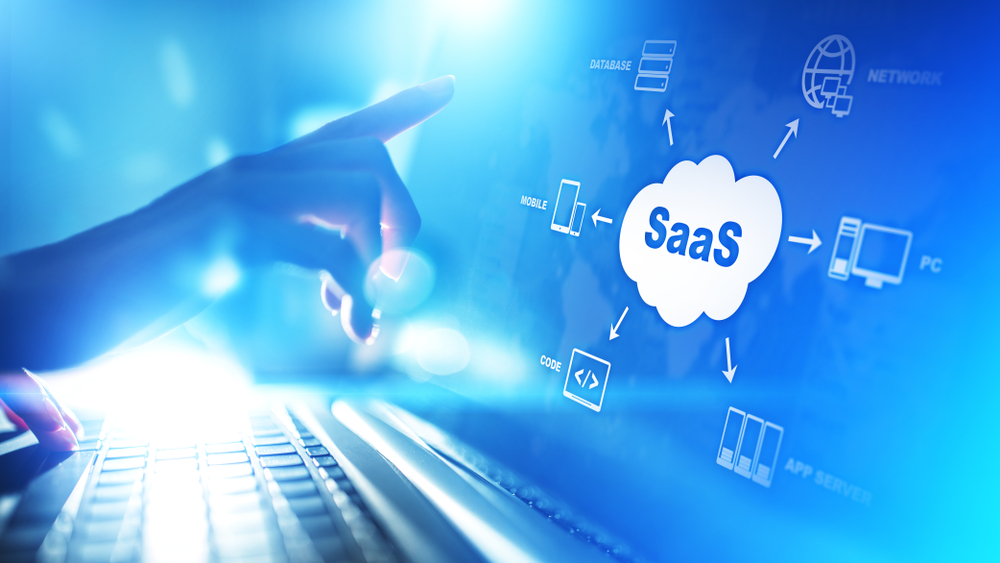Eco-friendly businesses are under growing pressure to help reduce their impact on the planet. They are investing in solar power and other forms of renewable energy, using recycled materials to make their products and allowing employees to work remote to minimize their carbon footprint from travelling. You can read a detailed list of things that green businesses should do here.
However, there are a number of other initiatives that they should consider to both improve sustainability and profitability. One option that they may want to consider is investing in SaaS. Sebastien Bardoz of the Forbes Business Development Council cited research showing that using SaaS technology can reduce carbon emissions by 20%.
Of course, SaaS is also great for the company’s bottom line. SaaS can increase business efficiency by 30%.
Companies of all sizes, from startups to Fortune 500 behemoths, are using the potential of SaaS to improve operations and drive development. The SaaS journey is a complex cycle that involves careful planning, smart decision-making, and ongoing optimization. Here, we delve into the complexities of the SaaS life cycle, looking at how firms can use it to improve innovation, efficiency, and long-term success.
1. Procurement
There are a lot of great skills that you can learn to create a more successful eco-friendly business. One of them is to learn to improve the procurement process.
The SaaS lifecycle begins with procurement, which is a series of steps that a company takes to subscribe to and deploy a new software solution. Unlike traditional procurement, software procurement involves the purchasing of digital solutions with ongoing costs, not physical products that are bought for a one-time fee.
The process can differ among organisations, subject to their decision-making hierarchy. However, Vertice explains that the SaaS procurement process generally follows a general outline of:
- Identifying needs: To start, you should develop a thorough understanding of what your organisation requires from new software. You should analyse your current challenges and future goals to establish clear objectives.
- Researching tools: Next, you need to research and compare various software solutions available on the market. Take factors like features, pricing, and compatibility into account to create a shortlist of potential options.
- Negotiating: Finally, engage with software providers to secure the best pricing and terms. Discuss contracts, pricing, and service-level agreements to ensure they align with your needs.
- Onboarding the new software
2. Onboarding
Onboarding is a critical phase in ensuring that future users become familiar with and proficient in using the software effectively. Here’s how the SaaS onboarding process works:
- Training and education: It’s important that businesses provide comprehensive training for their employees. This training can include webinars, tutorials, or in-person sessions.
- Data migration and integration: It’s sometimes necessary to migrate data from existing systems to the new SaaS solution, or to set up integrations with other systems to ensure a seamless flow of data. Testing data integrity and integrations thoroughly is vital.
Poor onboarding when adopting a SaaS solution or any new technology can have negative consequences for a business, from low productivity and user frustration to data loss and security breaches. As a result, it’s crucial to invest time and resources in effective end user training to ensure a smooth transition and maximise the benefits of the SaaS investment.
3. Usage
The penultimate stage in the SaaS journey is about keeping a close eye on how the business uses the software its chosen. From day one of using the new software, usage and performance should be monitored. This means measuring key metrics to evaluate whether it’s meeting business objectives, exploring more advanced features, and making necessary adjustments to optimise usage and maximise its value.
- Monitoring usage: This means regularly checking how different teams within the company are using the software. For instance, it may become apparent that not all of the features you’re paying for are being used. If so, a business can then either train their staff into how to use these features, or look to negotiate a fee reduction by removing underutilised features.
- Performance check: It’s also possible that the SaaS isn’t operating as originally intended. Bugs or issues may need fixing to ensure it’s running smoothly without causing disruptions.
- Evaluating long-term fit: Business’ needs can change over time. It’s important to periodically assess whether the SaaS software still aligns with evolving requirements. If it doesn’t, it might be time for a business to consider other options.
4. Renewal
Assessing whether to renew a SaaS contract is a critical decision for any business. It involves a comprehensive evaluation of the software’s value, performance, and alignment with the evolving needs of the company. This process can be broken down into two main steps:
Assessing the software
An evaluation into how the SaaS software has helped an organisation achieve its goals, such as saving money, working more efficiently, or boosting productivity, can aid renewal decision-making. It’s also a good time to get employee feedback on how reliable the software is and how it fits into daily operations.
Negotiating renewal terms
If the assessment suggests that renewing the SaaS contract is the right decision, the next step is to negotiate renewal terms to ensure the best possible deal for your business. Businesses can often bargain for a better subscription through loyalty-based discounts or volume-based pricing.
In conclusion, the SaaS life cycle is a multifaceted journey that demands strategic planning and execution at every stage. The continuous monitoring of software usage and performance is vital to extract maximum value, while the renewal phase necessitates a thorough assessment and negotiation for the best possible terms. Mastering the SaaS life cycle is key to achieving innovation, efficiency, and sustained success in the ever-evolving business landscape.
